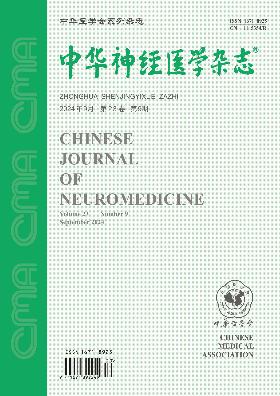toll样受体在多发性硬化中的作用及肉桂醛对其的抑制作用
Q4 Medicine
引用次数: 0
摘要
toll样受体(Toll-like receptor, TLRs)是一种跨膜蛋白受体,可介导炎症反应,激活小胶质细胞并诱导其向M1型转化,促进CD4+T细胞向Th1和Th17细胞分化,诱导一氧化氮合酶(nitric oxide synthase, iNOS)过表达,从而加重多发性硬化(multiple sclerosis, MS)的进展。肉桂醛(Cinnamaldehyde, CA)是肉桂的主要成分,能抑制tlr的活性,具有明显的抗炎作用,可能在MS的治疗中发挥积极作用。本文将重点研究tlr与MS的关系以及CA对tlr的抑制作用。关键词:多发性硬化症;肉桂醛;toll样受体本文章由计算机程序翻译,如有差异,请以英文原文为准。
Role of toll-like receptors in multiple sclerosis and inhibiting effect of cinnamaldehyde on them
Toll-like receptors (TLRs) are a kind of transmememal protein receptors, which can aggravate the progress of multiple sclerosis (MS) by mediating inflammatory response, activating microglia cells and inducing their transformation into M1 type, promoting CD4+T cells to differentiate into Th1 and Th17 cells, and inducing the overexpression of nitric oxide synthase (iNOS). Cinnamaldehyde (CA) is the main component of cinnamon, which can inhibit the activity of TLRs and has a significant anti-inflammatory effect, and may play an active role in the treatment of MS. This paper will focus on the relations between TLRs and MS and how CA inhibits TLRs.
Key words:
Multiple sclerosis; Cinnamaldehyde; Toll-like receptor
求助全文
通过发布文献求助,成功后即可免费获取论文全文。
去求助
来源期刊

中华神经医学杂志
Psychology-Neuropsychology and Physiological Psychology
CiteScore
0.30
自引率
0.00%
发文量
6272
期刊介绍:
 求助内容:
求助内容: 应助结果提醒方式:
应助结果提醒方式:


